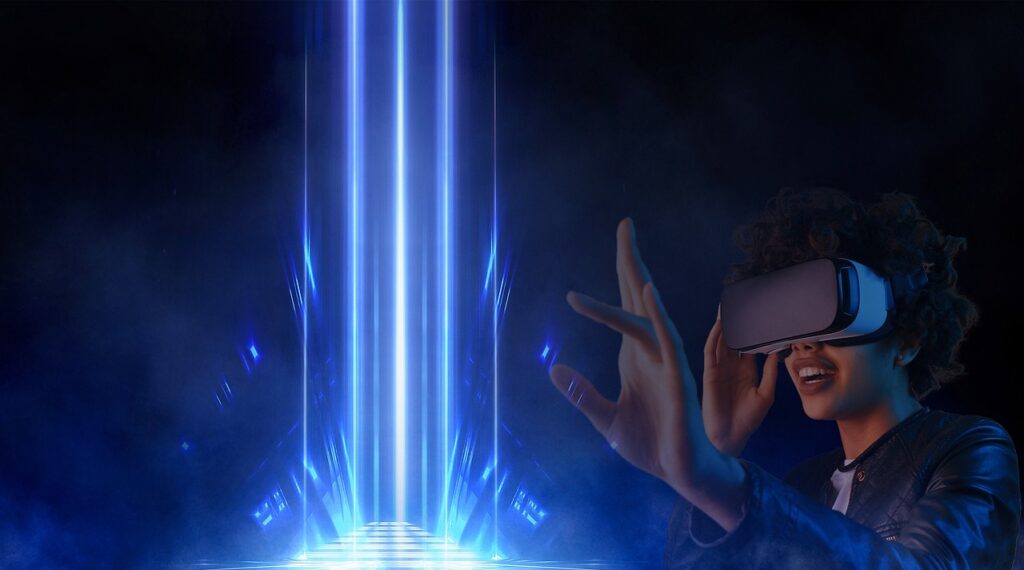3D gaming has revolutionized the way we play and experience games, transforming the digital landscape into immersive, lifelike worlds. In this article, we’ll delve into the fascinating realm of 3D gaming, exploring its history, technology, impact, and future trends. Buckle up as we journey through the dynamic world of three-dimensional gaming!
Game 3D: 3D gaming has revolutionized the way we play and experience games, transforming the digital landscape into immersive, lifelike worlds. In this article, we’ll delve into the fascinating realm of 3D gaming, exploring its history, technology, impact, and future trends. Buckle up as we journey through the dynamic world of three-dimensional gaming
The Evolution of 3D Gaming
Early Beginnings
The journey of 3D gaming started way back in the late 1970s and early 1980s with rudimentary wireframe graphics. Remember the classic game “Battlezone”? It was one of the first to feature 3D vector graphics, giving players a taste of what was to come.
The Rise of 3D Consoles

 #3DS #WiiU #Link #Mario #Pokémon #NintendoDay” by Ronx Ronquillo is licensed under CC BY-NC-SA 2.0
#3DS #WiiU #Link #Mario #Pokémon #NintendoDay” by Ronx Ronquillo is licensed under CC BY-NC-SA 2.0The real breakthrough came in the mid-1990s with the advent of 3D-capable consoles like the Sony PlayStation and Nintendo 64. These systems brought games like “Super Mario 64” and “Tomb Raider” to life, showcasing the potential of 3D environments.
How 3D Technology Works in Gaming
Understanding 3D Graphics
At its core, 3D graphics involve creating a digital representation of a three-dimensional space. This is achieved through complex algorithms that calculate light, shadow, and textures, giving objects a realistic appearance.
The Role of Hardware and Software
To render these stunning visuals, powerful hardware and sophisticated software are essential. Graphics processing units (GPUs) play a critical role, while game engines like Unity and Unreal Engine provide the tools for developers to build intricate 3D worlds.
Popular 3D Gaming Genres
Action and Adventure
Who doesn’t love a good action-packed adventure? Games in this genre, like “Uncharted” and “Tomb Raider,” offer breathtaking environments and exhilarating gameplay, keeping players on the edge of their seats.
Role-Playing Games (RPGs)
RPGs like “The Witcher 3” and “Final Fantasy” series immerse players in rich narratives and expansive worlds, where they can embark on epic quests and develop their characters.
Simulation Games

Ever wanted to build a city or manage a farm? Simulation games like “The Sims” and “Cities: Skylines” allow players to create and control virtual environments, providing endless creative possibilities.
Sports and Racing
Feel the thrill of the race or the excitement of the game with sports and racing titles like “FIFA” and “Forza Horizon.” These games bring realistic physics and lifelike graphics to the forefront, enhancing the player’s experience.
Iconic 3D Games and Franchises
Super Mario 64
This game was a game changer, quite
literally. “Super Mario 64” not only brought Mario into the third dimension but also set the standard for 3D platformers with its innovative controls and level design. Its influence can still be seen in modern games.
The Legend of Zelda: Ocarina of Time
Often hailed as one of the greatest games of all time, “Ocarina of Time” introduced players to a richly detailed world filled with puzzles, dungeons, and memorable characters. Its use of a 3D environment to tell an epic story was groundbreaking.
The Elder Scrolls Series
From “Morrowind” to “Skyrim,” the Elder Scrolls series has consistently pushed the boundaries of open-world 3D gaming. These games offer immense worlds to explore, filled with lore, quests, and a level of freedom rarely seen in gaming.
Grand Theft Auto Series
The “Grand Theft Auto” series revolutionized the open-world genre with its detailed urban environments, freedom of exploration, and engaging storylines. “GTA V” in particular remains a benchmark for 3D open-world games.
The Impact of 3D Gaming on Players
Immersion and Engagement
3D gaming provides a level of immersion that 2D games simply cannot match. The depth and realism draw players into the game world, making them feel like they’re part of the action. This level of engagement can enhance the gaming experience significantly.
Cognitive and Social Benefits
Believe it or not, 3D games can have cognitive and social benefits. They often require strategic thinking, problem-solving, and quick decision-making. Multiplayer 3D games also foster social interaction, teamwork, and communication skills.
Virtual Reality and 3D Gaming
VR Headsets and Controllers
Virtual reality (VR) takes 3D gaming to another level by placing players directly into the game world. VR headsets like the Oculus Rift, HTC Vive, and PlayStation VR, along with motion controllers, provide an unparalleled immersive experience.
Popular VR 3D Games

Games like “Beat Saber,” “Half Life: Alyx,” and “Resident Evil 7: Biohazard” have shown how VR can enhance the 3D gaming experience. These titles utilize VR technology to create highly immersive and interactive environments.
The Future of 3D Gaming
Advancements in Graphics Technology
The future of 3D gaming looks incredibly bright, with advancements in graphics technology continually pushing the boundaries of realism. Ray tracing, for instance, simulates how light interacts with objects, creating more lifelike environments.
Cloud Gaming and 3D
Cloud gaming services like Google Stadia, NVIDIA GeForce Now, and Xbox Cloud Gaming are making high-end 3D games more accessible. These platforms allow players to stream games over the internet, reducing the need for expensive hardware.
AI and Machine Learning in Games
Artificial intelligence (AI) and machine learning are starting to play significant roles in game development. AI can create more realistic non-player characters (NPCs) and procedurally generated environments, enhancing the 3D gaming experience.
Challenges in 3D Gaming Development
Technical Limitations
Developing 3D games is no easy feat. Technical limitations, such as hardware constraints and software optimization, can pose significant challenges. Ensuring a smooth and consistent frame rate while rendering detailed 3D environments is a complex task.
High Development Costs
Creating high-quality 3D games requires substantial financial investment. The cost of developing detailed models, textures, and animations, along with the necessary technology, can be prohibitively high, particularly for smaller studios.
In Conclusion, 3D gaming has come a long way from its early wireframe days. It has transformed the gaming landscape, providing immersive, lifelike experiences that capture the imagination. As technology continues to advance, the possibilities for 3D gaming are virtually limitless. Whether you’re a seasoned gamer or a newcomer, there’s never been a better time to explore the world of 3D gaming.
FAQs About Game 3D
Q1: What was the first 3D game ever made?
A1: The first 3D game is often considered to be “3D Monster Maze,” released in 1981 for the Sinclair ZX81. It featured wireframe graphics and provided a basic 3D experience.
Q2: What hardware do I need for 3D gaming?
A2: For optimal 3D gaming, you’ll need a powerful GPU, a good CPU, sufficient RAM, and a high-quality monitor. For VR gaming, a compatible VR headset and motion controllers are necessary.
Q3: Are 3D games more difficult to develop than 2D games?
A3: Yes, 3D games are generally more complex to develop due to the additional dimension. This requires more detailed modeling, texturing, and programming, which can increase development time and cost.
Q4: Can 3D gaming improve cognitive skills?
A4: Yes, studies have shown that 3D gaming can improve cognitive skills such as spatial awareness, problem-solving, and quick decision-making. Multiplayer games can also enhance social skills.
Q5: What is the future of 3D gaming?
A5: The future of 3D gaming includes advancements in graphics technology, increased accessibility through cloud gaming, and the integration of AI and machine learning to create more immersive and dynamic experiences.


